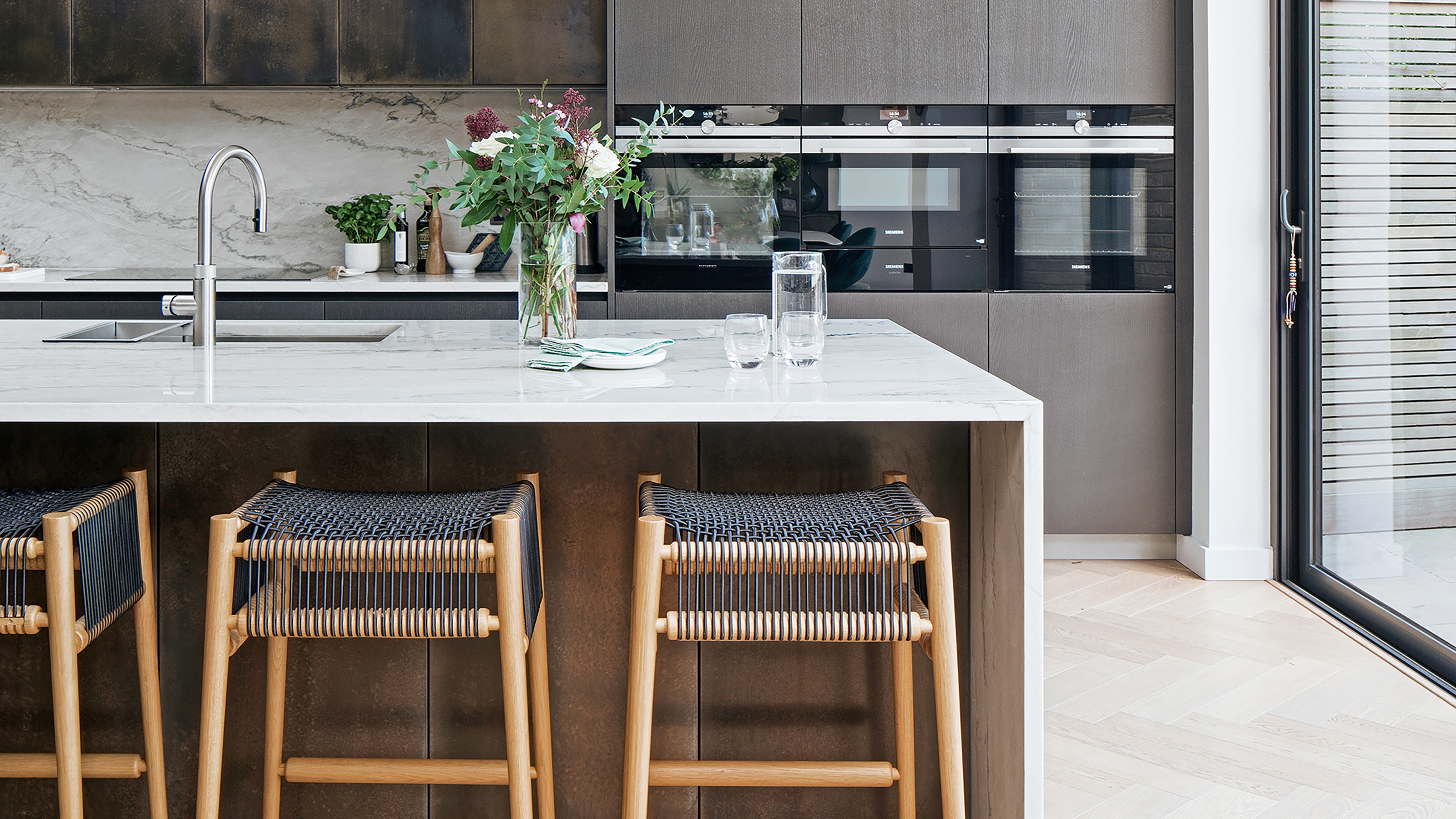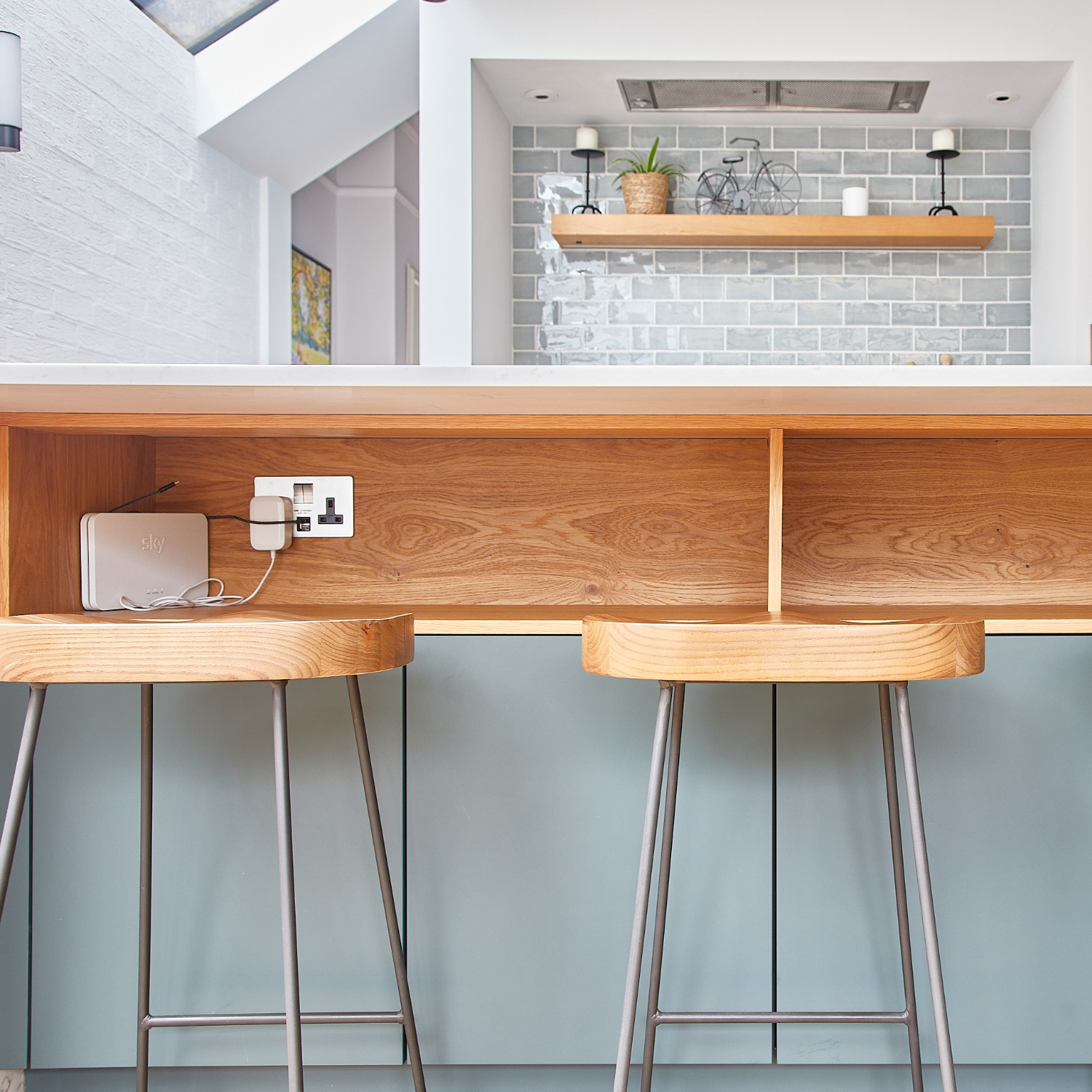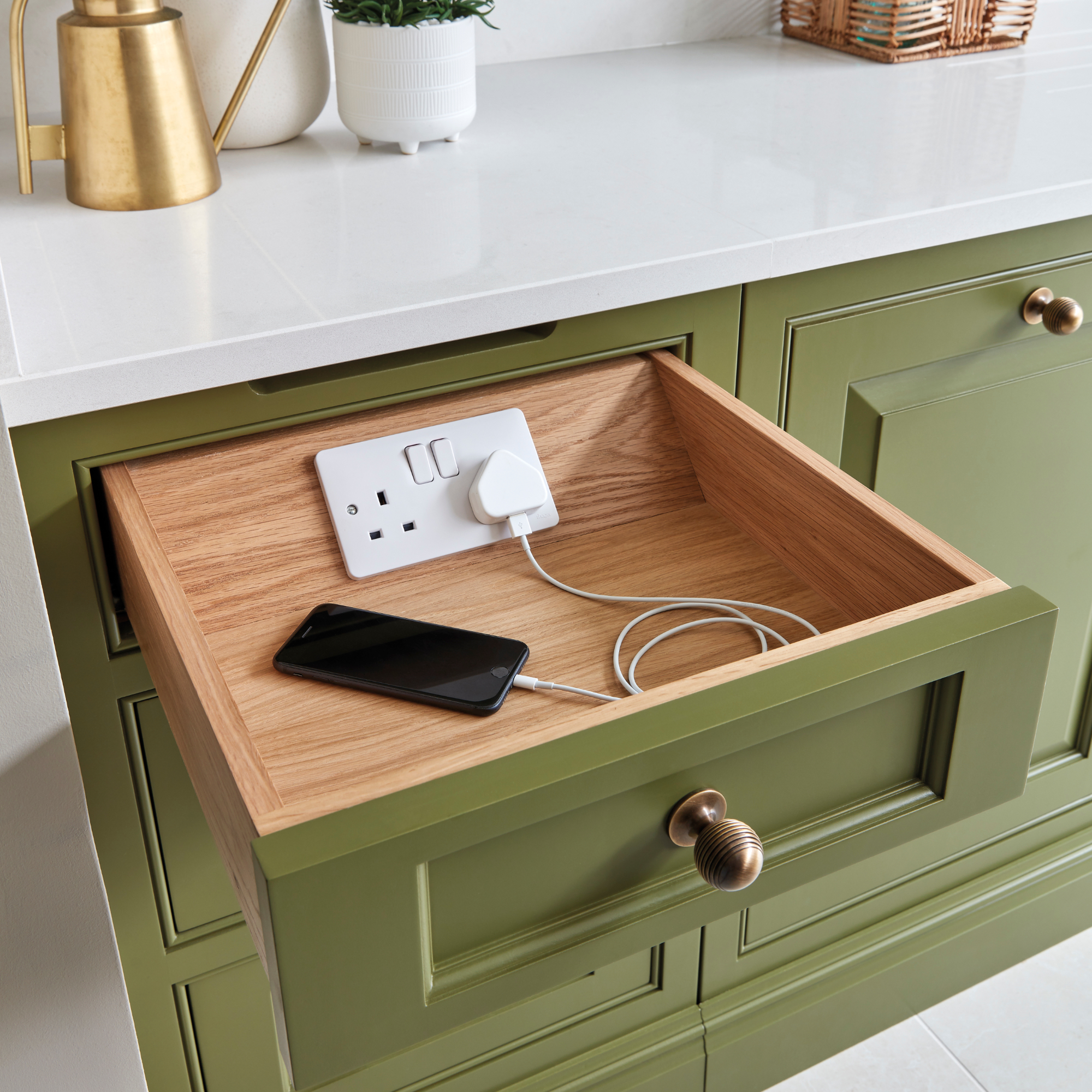Where do you put sockets on a kitchen island? Experts share the best options, and regulations to keep in mind
Everything you need to know about planning where to put sockets on a kitchen island


Whether you’re in the middle of a kitchen renovation or are thinking about adding an island to your kitchen in the future, you may have wondered where do you put sockets on a kitchen island? And thankfully there are a number of different options available to you.
But before you start thinking about kitchen island ideas, it’s important to consider how you and your family will be using the space and the kitchen island more generally. For example, do you plan on plugging in small appliances like a blender, stand mixer or air fryer? Or will you spend time working at the kitchen island and therefore need somewhere to plug a laptop in?
Where do you put sockets on a kitchen island?
‘Kitchen islands tend to be multi-functional - not just a food prep and cooking space, but also a bar, table and even desk. So they need to be well planned out,’ argues Paul Dore, managing director at County Stone Ltd. And as you think about this, you’ll probably be contemplating how to hide plug sockets in a kitchen.
If you plan on housing a sink or hob on your kitchen island, this will also affect where you place your sockets, as ‘their positioning is critical in ensuring they meet electrical safety standards,’ warns Karl Bantleman, Head of Digital at Direct365.

However, it’s important not to forget that ‘your island is so often the centrepiece of your kitchen, used for cooking, eating, storage, and socialising – and adding power sockets elevates its practicality,’ says Architect, Founder of HOKO and Scotland’s Home of The Year Judge, Danny Campbell.
You don’t want to ruin the overall look of your kitchen island by having unsightly wires trailing all over it. But at the same time, you still want it to be practical for you and your family.
So, keep reading to find out everything you need to know about putting sockets on your kitchen island.
Sign up to our newsletter for style inspiration, real homes, project and garden advice and shopping know-how
What are the regulations for sockets on kitchen islands?
Karl explains, ‘building regulations specify that if your island includes a hob or a sink on it, a plug socket should be positioned at least 30cm away. That way, this prevents any water from splashing onto the live electrical circuit and overheating which could result in a fire.
‘Furthermore, sockets by law should be placed 15cm above the island countertop surface, in a pop up socket system, or directly under the surface of a counter to decrease exposure while protecting the socket from any liquid related spillage,’ he continues.
If you don’t follow these regulations, a number of hazards are more likely to occur, which is why the positioning of your sockets on a kitchen island are so important. One obvious hazard is electric shock. But there are a few others that can occur if your kitchen island sockets are exposed to too much moisture or water.

Firstly, ‘water can provide a path to ground for an electrical current. This could trigger a ground fault and potentially cause a fire if not properly protected by a ground-fault circuit interrupter. Or if the plug or socket gets wet or damaged, this can cause a short circuit, causing the current to flow in the wrong direction and therefore leading to malfunctions, damage to the appliance, or even fire,’ Karl warns. And 'exposure to moisture over time can lead to corrosion of electrical components, wires, and connectors. Corrosion weakens the insulation and increases the likelihood of electrical faults.’
So, where should you put sockets on a kitchen island, bearing all of this in mind? The experts have shared their top recommendations to ensure safety while also being as functional as possible.
Where are sockets best placed on a kitchen island?
Once you’ve worked out what you’ll typically need the sockets for, whether that be for charging or powering small appliances, it’s then time to decide where to place the sockets. For some, you may be most concerned with how they fit into the design of your kitchen island and how they look aesthetically. But there are a number of different options, so at least one, or even a combination of a few, should work for you and your kitchen design.
Pop-up sockets

For a discreet design that is a little bit less visible, there are pop-up sockets. As the name alludes to, these outlets pop up from the kitchen island worktop in most instances.
‘These outlets are installed flush with the countertop and can be hidden when not in use,’ suggests Darren Watts, Showroom Development and Design Director at Wren Kitchens. They typically feature a lid that can be pushed down to reveal the outlets when needed.
These aren't as expensive as you'd imagine, you can pick up a pop-up power socket from £30 at Amazon. However make sure it is installed safely but a professional if you have no electrical experience.
At the end or underneath the island

‘If a plug socket must be on show, we do our best to place it where it is least visible from most of the room such as, for example, in the knee space underneath the seating area or on the end panel facing away from the room,’ declares Kitchens By Holloways’ Expert Kitchen Designer, Barty Rowland.
‘Beneath the seating area would be ideal for those who use their laptop on the breakfast bar, as cables can be kept tidily underneath the island whilst being within reach when sat on a stool,’ adds Molly Chandler, Designer at Willis & Stone. Having the sockets underneath the kitchen island or at the end of it also minimises the risk or any spillages or debris from getting into them.
Since you are going to catch a glimpse of this socket from time to time, consider investing in an aesthetically pleasing option. For example, This B&Q Antique Brass Double socket is just £11 and will turn the functional into the pretty.
Charging drawers and USB ports

If you’re looking to avoid having a number of different wires littered across your kitchen island, there is a definite solution. ‘Bespoke in-island charging drawers are becoming increasingly popular in the kitchen,’ adds Tom Howley, Creative Design Director of the eponymous kitchen company. ‘You can choose from multiple plug points and USB ports, perfect for charging and stowing away phones, tablets and other small appliances that clutter surfaces.’
‘These outlets typically feature standard power sockets along with integrated USB ports, which can be either USB-A or USB-C, or sometimes a combination of both,’ according to Darren. So, this essentially gives you the best of both worlds, while being hidden away in a drawer – or under/at the end of the island – when not in use.
Inside cabinets
Similar to hiding them in a drawer, you can also put sockets inside your island cabinets. If you’re a bit unsure about doing this, Paul reassures us that even though, ‘planning them under worktops or hiding them in drawers may sound unusual, doing so maintains a seamless design, especially in a modern kitchen, and means they are safe from accidents.’

FAQs
How many plugs do you need on a kitchen island?
Again, this is mostly down to personal preference, as there is no set rule for how many plugs there should be on a kitchen island. ‘However, it's common to have at least two electrical outlets on a kitchen island for convenience,’ Darren maintains.
‘For home working and larger islands with seating areas, it is useful to have additional power sockets under the work surface, on the side of the island, to accommodate computer and smart device charging. Sockets and USBs can also be really useful on the side of the island, so you can have your cooking/prepping power on top and working power lower down where seated.’
Essentially, you can never have enough power sockets but don't want that many whereby it becomes distracting to the eye.
What are the negatives of having sockets on a kitchen island?
‘Like any electrical component, sockets require regular maintenance to ensure they remain safe and functional,’ says Darren. ‘Dust, grease, and debris can accumulate in and around outlets, potentially causing electrical issues or safety hazards if not cleaned regularly.’
And ‘while well-designed sockets can enhance the appearance of a kitchen island, poorly placed, visible or aesthetically unpleasing outlets may detract from its visual appeal,’ Darren concludes. ‘Careful consideration should be given to the design, dynamics and placement of outlets to ensure they blend seamlessly with the island's aesthetics.’
If you already have an existing kitchen island and are now thinking about adding sockets, ‘when planning to renovate your space, you must also ensure that a power supply runs to the island which will usually be located under floor level,’ Barty adds.
‘Retrofitting a plug onto an existing island becomes tricky without a power supply to it already in place.’ But it is doable, even if it may be a little more costly than integrating them when the island was first built.

Ellis Cochrane has been a Freelance Contributor for Ideal Home since 2023. Ellis has been writing about homes, interiors and gardens for four years now, with her also contributing to House Beautiful, Country Living, Expert Reviews, Real Homes and Stylist.